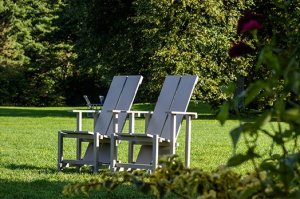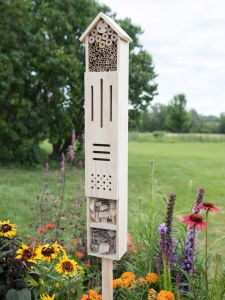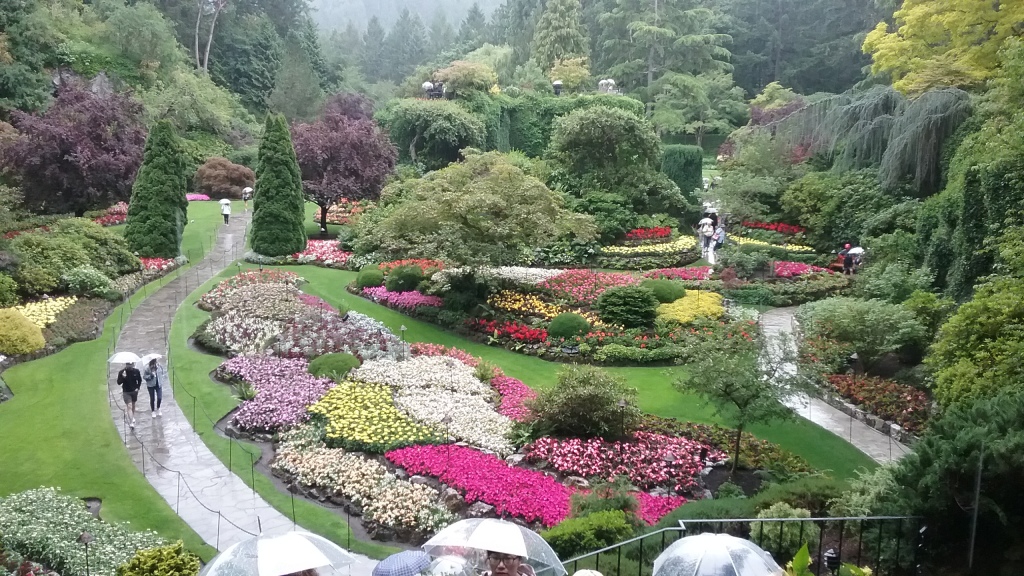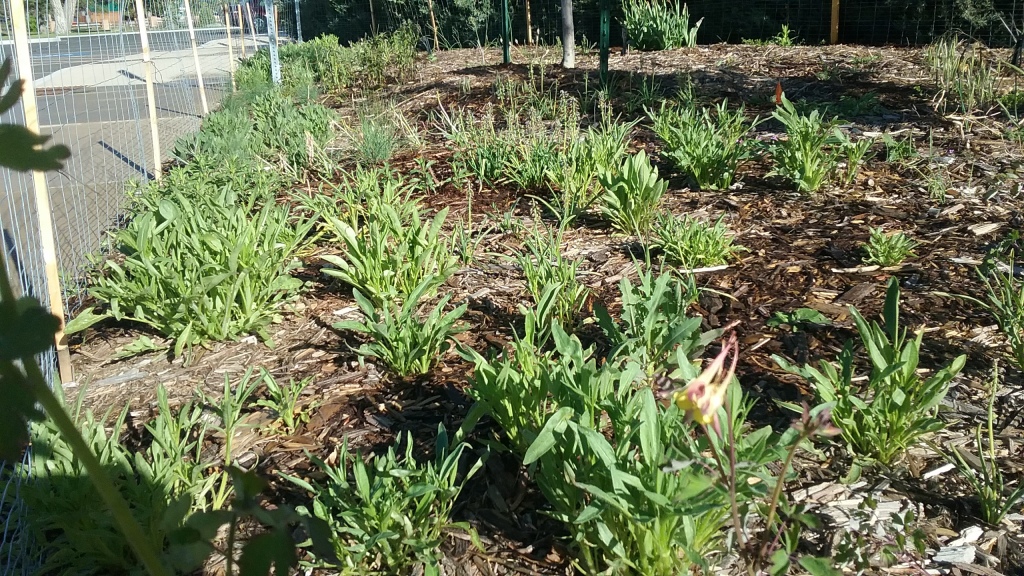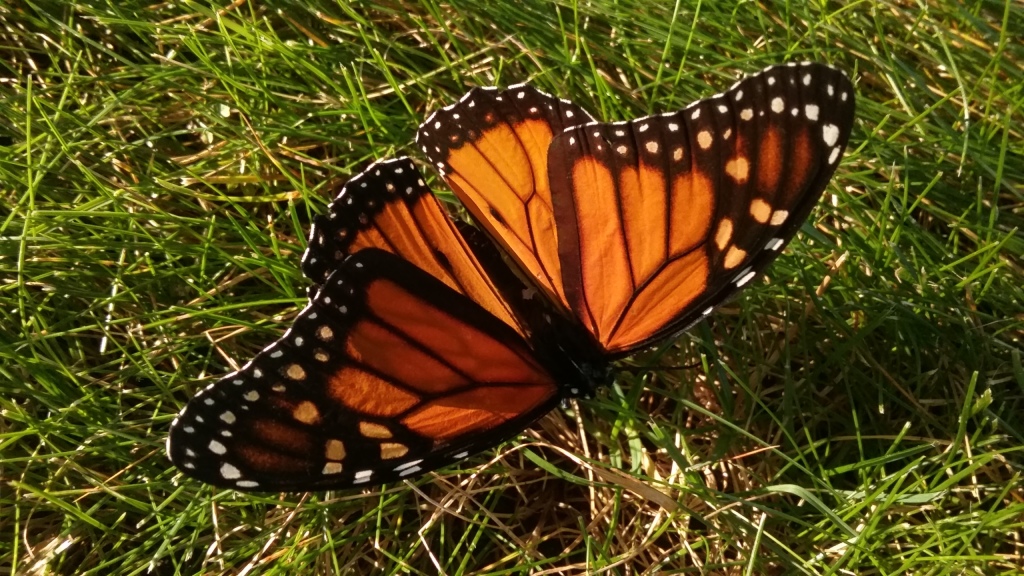“Nature’s Best Hope,” chaparral gardens, Plant Select, regenerative gardening and farming

“Gardeners learn lecture season lessons” was published April 10, 2021, in the Wyoming Tribune Eagle.
By Barb Gorges
In gardening, there’s the growing season followed by the harvest season. And then there’s the lecture season, starting in January and extending into April.
With many events going virtual this year, there was a lot to pick from.
More than 300 people signed up for the virtual Cheyenne Habitat Hero Committee annual workshop in January. Many were from out of state, and even from Canada.
The workshop featured Douglas Tallamy, author of “Nature’s Best Hope.” He explained how planting at least 80% native plants in our gardens supports native insects, birds, other wildlife and people.
Jim Tolstrup, from the High Plains Environmental Center in Loveland, Colorado, talked about what native plants he grows and sells at the center’s annual plant sale.
Michelle Bohanan, Laramie County Master Gardener, explained how easy it is to start native seeds and the techniques she uses. The links to videos of all three talks are at https://cheyenneaudubon.wordpress.com/habitat-hero/.
Fort Collins Nursery always offers a nice lineup of classes on winter Saturdays. I noticed Lauren Springer was offering one virtually on chaparral gardening.
Springer, who has gardened in several Colorado Front Range communities over the last 30 years, specializes in what she calls “The Undaunted Garden,” also the name of a book she wrote and a garden she designed for The Gardens on Spring Creek in Ft. Collins, Colorado.
Her idea has been to create lush arrays using plants hardy for our climate, from wherever in the world they might be found. In the eight or so years since the first time I attended one of her lectures, she has begun to emphasize native plants accommodating pollinators and saving water.
This year, it’s chaparral—shrubby plants that do well in dry climates like ours. They need water the first year or two to get established and need only natural precipitation after that. They also need little maintenance. Some examples include Wyoming natives: threadleaf sage, fringed sage, rabbitbrush, leadplant, blanketflower, sulphur flower and prickly poppy.
Springer declared that now at the age of 61, after years of landscape gardening, her knees are shot and she’d rather spend more time hiking and less time gardening. Most homeowners are of a similar mind so maybe this low-maintenance garden fad will catch on.
The Cheyenne Botanic Gardens invited Ross Shrigley, executive director of Plant Select, to speak virtually. Plant Select is a cooperative endeavor of Colorado State University and the Denver Botanic Gardens. It develops plants suited to the Rocky Mountain region and gets them in the stores and catalogs. Some come from what’s now the High Plains Arboretum west of Cheyenne.
The first part of Shrigley’s talk was a look at successful Front Range gardens and a few disasters. One disaster was a large pine tree that blew over, exposing that it had been planted without removing the burlap and wire cage around the roots and only one root escaped.
Shrigley highlighted a number of plants to watch for as they come on the market. Not all are native to our region, but those would fit in Tallamy’s 20% non-native category. The non-native honeybees will enjoy them.
Then I signed up for the four-day “Soil Regen Summit 2021” put on by the Soil Foodweb School, https://www.soilfoodweb.com/. Much of it was geared to farmers and market gardeners from around the world.
Elaine Ingham, who earned her PhD in the 1970s from Colorado State University and taught at Oregon State, is the director of the school. Her keynote talk explained how healthy soil works. It requires a massive number of microorganisms. They fill roles such as converter of plant materials on the soil surface and converter of minerals in the soil to make useable food for plants and other microorganisms.
A functioning soil does not require chemical additives. To achieve this, farmers disturb the soil very little and keep it covered, either with mulch or a cover crop. Functioning soil also produces more nutritious crops.
Market farmer Jean-Martin Fortier of Quebec, Canada, https://www.themarketgardener.com/, explained how he works with regenerative farming guidelines successfully.
The idea of not pulverizing the soil every year before planting is becoming mainstream. You can read about it on the US Department of Agriculture’s Natural Resource Conservation Service website, https://www.nrcs.usda.gov/. Look for the Soil Biology Primer.
Ingham made one startling declaration. If all farmers adopted regenerative agricultural practices, enough carbon would be sequestered to solve the climate crisis within six years.
Farmers are beginning to see a way out of the petroleum-based fertilizer and pesticide cycle that has held them hostage for more than 70 years. There is more to regenerative agriculture than I can explain here so I hope you will investigate it for yourself.

























 6th Annual Cheyenne Habitat Hero Workshop: “Rethinking Wyoming Landscaping – Native Plant Gardening 101”
6th Annual Cheyenne Habitat Hero Workshop: “Rethinking Wyoming Landscaping – Native Plant Gardening 101” As part of his job at the gardens, Kelaidis leads plant tours to foreign countries, most recently Tibet. A tour of the Sichuan, China, planned for June will depend on world health concerns. It’s helpful he reads Chinese, having once been a student of the language.
As part of his job at the gardens, Kelaidis leads plant tours to foreign countries, most recently Tibet. A tour of the Sichuan, China, planned for June will depend on world health concerns. It’s helpful he reads Chinese, having once been a student of the language.

